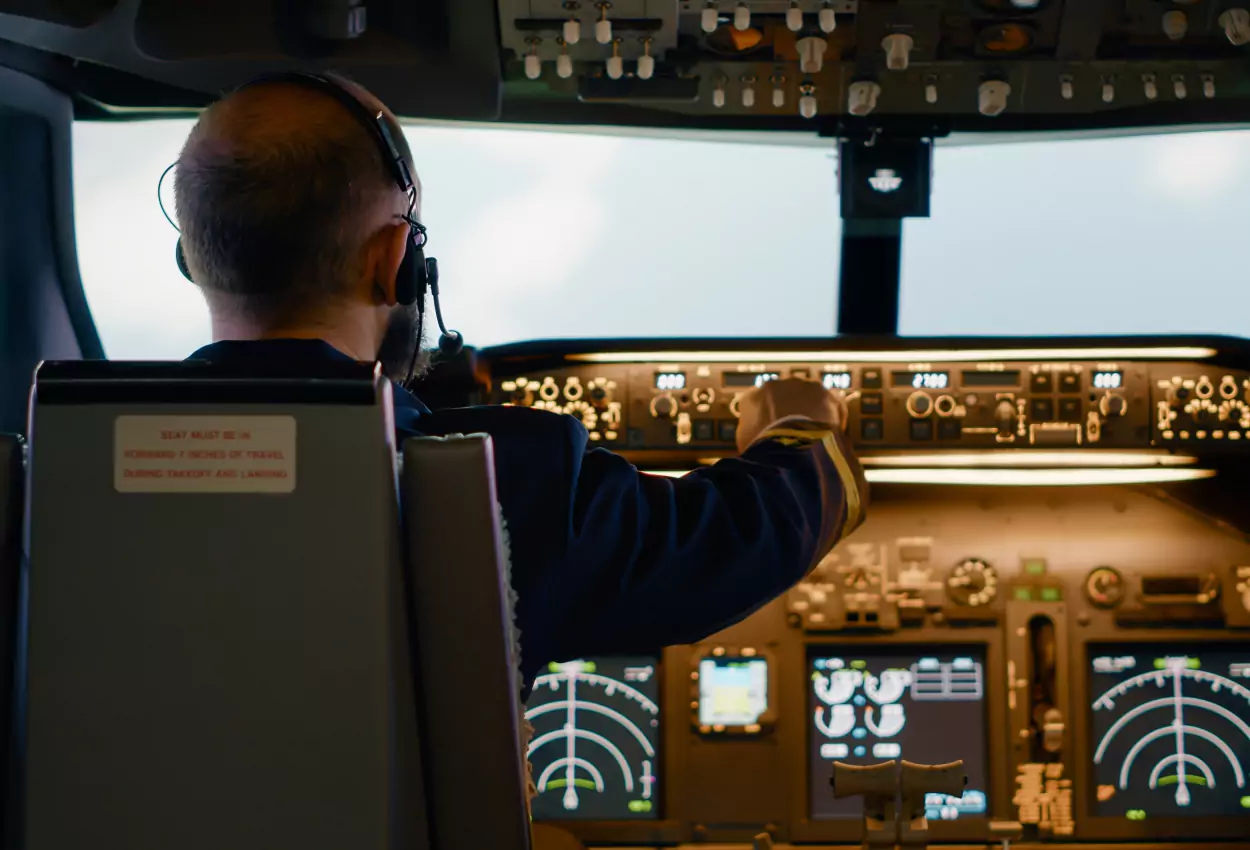As the aviation industry advances, the methods used to train pilots are undergoing a significant transformation. Traditionally reliant on physical simulators and extensive classroom instruction, pilot training is now being revolutionized by cutting-edge technologies such as Virtual Reality (VR) and Augmented Reality (AR). These immersive technologies are reshaping how pilots learn and practice their skills, offering new opportunities to enhance training effectiveness, accessibility, and safety.
The Limitations of Traditional Pilot Training
Pilot training has traditionally depended on a combination of physical flight simulators, classroom instruction, and real-world flight experience. While effective, these methods come with several limitations. High-fidelity simulators, although crucial for replicating flight conditions, are expensive to purchase, maintain, and operate. They also require significant space and resources. Classroom instruction, while providing theoretical knowledge, often lacks the practical application that pilots need to handle real-world scenarios.
The Advent of Virtual Reality in Pilot Training
Virtual Reality (VR) is changing the landscape of pilot training by offering a fully immersive experience that overcomes many of the limitations of traditional methods. VR creates a simulated environment where pilots can practice flying without leaving the ground. This technology provides several significant advantages:
- Realistic Scenarios and Environments
VR technology allows for the creation of highly realistic and varied flying conditions. Pilots can experience a wide range of scenarios, including different weather conditions, emergency situations, and complex air traffic environments. This level of immersion helps pilots develop a deeper understanding of how to respond to various situations, enhancing their decision-making skills and preparedness. For instance, pilots can practice handling engine failures, navigating through severe weather, or managing in-flight emergencies in a controlled, risk-free setting.
- Cost Efficiency and Accessibility
High-end physical flight simulators are costly to acquire and maintain. In contrast, VR training systems are relatively affordable and can be updated with new scenarios and challenges more easily. This cost efficiency makes it possible for training programs to offer a broader range of experiences without incurring significant additional expenses. Furthermore, VR training can be conducted remotely, allowing pilots to train from different locations and at flexible times. This accessibility is particularly beneficial for pilots who may be located in remote areas or have demanding schedules.
- Enhanced Learning and Retention
The immersive nature of VR enhances learning by providing a more engaging and interactive experience. Studies have shown that immersive simulations can improve knowledge retention and skill acquisition compared to traditional training methods. Pilots are more likely to remember and apply the skills they practice in a VR environment because the experience closely mimics real-life flying.
The Role of Augmented Reality in Pilot Training
Augmented Reality (AR) complements VR by overlaying digital information onto the real world. This technology enhances real-world training scenarios with real-time data and visual cues. AR offers several key benefits for pilot training:
- On-the-Job Training Enhancement
AR can significantly enhance on-the-job training by providing pilots with real-time guidance and feedback. For example, AR glasses can display navigational aids, cockpit procedures, and checklists directly in the pilot’s line of sight. This real-time information helps pilots maintain situational awareness, follow procedures accurately, and make informed decisions. The integration of AR into training programs allows pilots to practice complex maneuvers and tasks while receiving immediate feedback, which helps improve performance and confidence.
- Interactive Learning Experiences
AR enables interactive learning by superimposing virtual elements onto physical objects. This capability is particularly useful for understanding and interacting with complex cockpit systems, performing maintenance tasks, or visualizing flight procedures. For example, an AR system might project a 3D model of a cockpit component onto a physical training setup, allowing pilots to explore and understand the component’s functionality in an interactive manner. This hands-on approach enhances comprehension and retention of technical knowledge.
- Safety and Precision
By incorporating AR into training, pilots can receive immediate feedback on their performance and correct errors in real-time. This ability to adjust and refine skills on the spot enhances the precision of their training and contributes to safer flight operations. For instance, AR can help pilots practice emergency procedures with immediate visual and auditory cues, improving their ability to respond effectively in real situations.
Challenges and Considerations
Despite the many benefits, the integration of VR and AR into pilot training presents several challenges. Ensuring the accuracy and realism of VR and AR simulations is crucial for effective training. Developers must create highly detailed and realistic environments to provide meaningful training experiences. Additionally, the technology must be regularly updated to reflect current aviation procedures, regulations, and equipment.
Another consideration is the potential for motion sickness or discomfort associated with VR use. Some users may experience nausea or dizziness during extended VR sessions. Addressing these issues requires careful design and testing of VR systems to ensure user comfort and minimize adverse effects.
The Future of Pilot Training
As VR and AR technologies continue to advance, the future of pilot training promises even greater innovation and effectiveness. We can expect more sophisticated training tools that offer enhanced realism, greater interactivity, and improved integration with real-world flying conditions. These technologies will play a crucial role in preparing the next generation of pilots, equipping them with the skills and confidence needed to handle the complexities of modern aviation.



